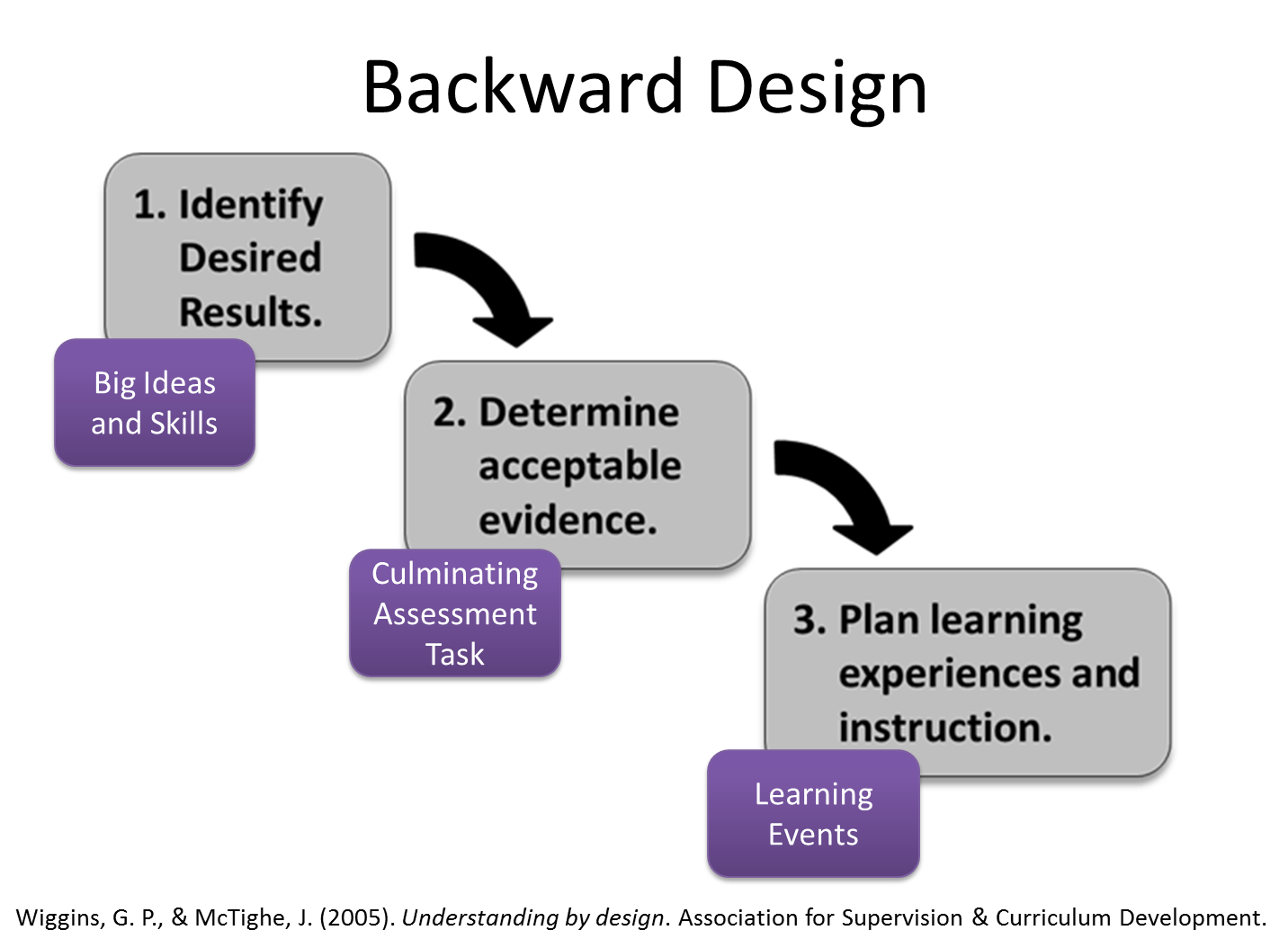 |
| Accessed from: http://kencito54.wordpress.com/author/kencito54/page/2/ |
Recently at our summer school placement, I had the opportunity to employ this design while planning a simple lesson for helping a student develop their metacognitive skills for reading, analyzing and solving math texts. I felt clunky and sloppy in the actual implementation of the lesson, but I expected this and probably should have expected the frequency at which that inner voice said, "What do you ask her next? Do I direct her or ask her her predictions?" The skills for directing and scaffolding a student's learning will come with time, but I am grateful to be introduced to the concept of Backward Design now, so that I can begin to think about the large picture and develop strategies for working my way back to the lesson. While working with my very patient student, it helped so much to have an understanding in place of what I wanted the student to learn and how I would assess her at the end of the process in order to have evidence of her learning.
I am experiencing this MAC program as a process of enlightenment (not exactly the same thing as the 18th century movement, but definitely a remolding of the mind). What I mean by this is that the teacher curtain is being pulled back and my lens into the classroom is shifting from the student perspective to that of the teacher's. It is exciting to move from the somewhat passive role of the student's viewpoint of the daily classroom lesson and activities. I knew that my teachers had a plan and a direction for where we were headed in the given two-week unit. I didn't spend much time considering their perspective, but if asked, I likely would have guessed that they planned their lessons a few days in advance, putting it together. This may have been true for one teacher or another, certainly, but stepping back I wonder if my teachers utilized their teaching moves effectively enough that I never noticed them, as they fostered my learning.
An example of this curtain-pull during our Ed Tech class was a group activity where two groups of two had to each assemble half of a picture puzzle. They didn't know what the other team had and couldn't look. The only way to solve the puzzle was through the two groups communicating verbally about what they saw in front of them. Ultimately, they solved the puzzle together by developing a common language around the puzzle, which moved gradually from specific details they observed in the picture pieces to an abstract coordinate system. An exciting activity that we were then invited to look more deeply into by considering the teacher's reasoning behind this choice of activity. Continuing with the gaming theme from last week, this activity seemed to promote team work, communication, problem solving, etc. in the context of a "gaming" inspired classroom. We were then invited to consider how we could use this activity in our own disciplines. By generating our own ideas for the game's utility in our own classrooms, helped me to take on the teacher's lens and interpret this activity from the viewpoint of the desired outcomes, not the student desk....
Throughout this summer term, I feel that I am coming to a deeper understanding of the phrase:
Teaching is a science and an art.
| Accessed from: flashmobsintheclassroom.blogspot.com |
That's all for the summer term! It's hard to believe the work I've accomplished and the relationships I have had the privilege of establishing with fellow MACers and our professors. Look forward to more blogging from me in the fall!
Hi Laura! It's amazing how much we've learned in such a short period of time. I've definitely felt that we've all improved a tremendous amount and I agree that we're slowly moving from our roles as students into our roles as teachers. I think it's really interesting to take time and think back about our past teachers to see if any of them were using these high leverage practices, and which ones weren't. I wonder how many of our teachers actually used the backward design process when planning their lessons. I remember having a teacher who taught her lessons word for word out of the textbook. It was horrible. Thanks for sharing your thoughts!
ReplyDelete